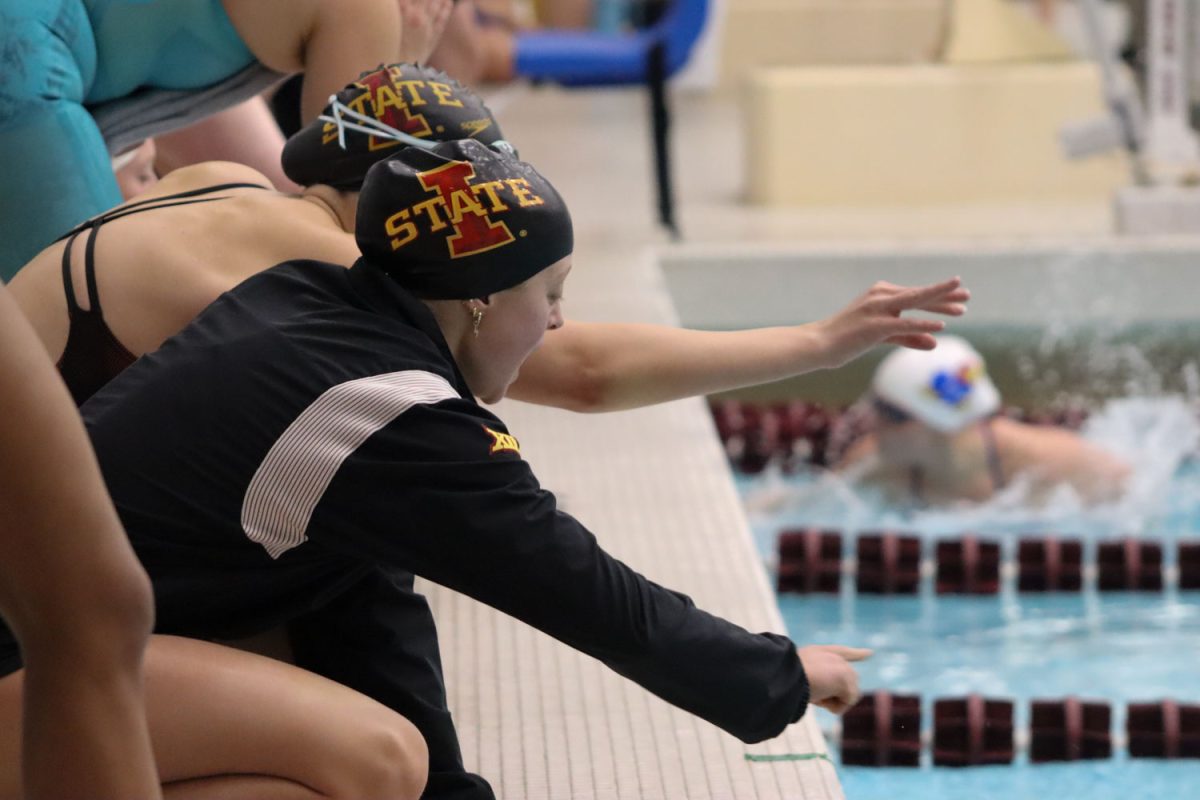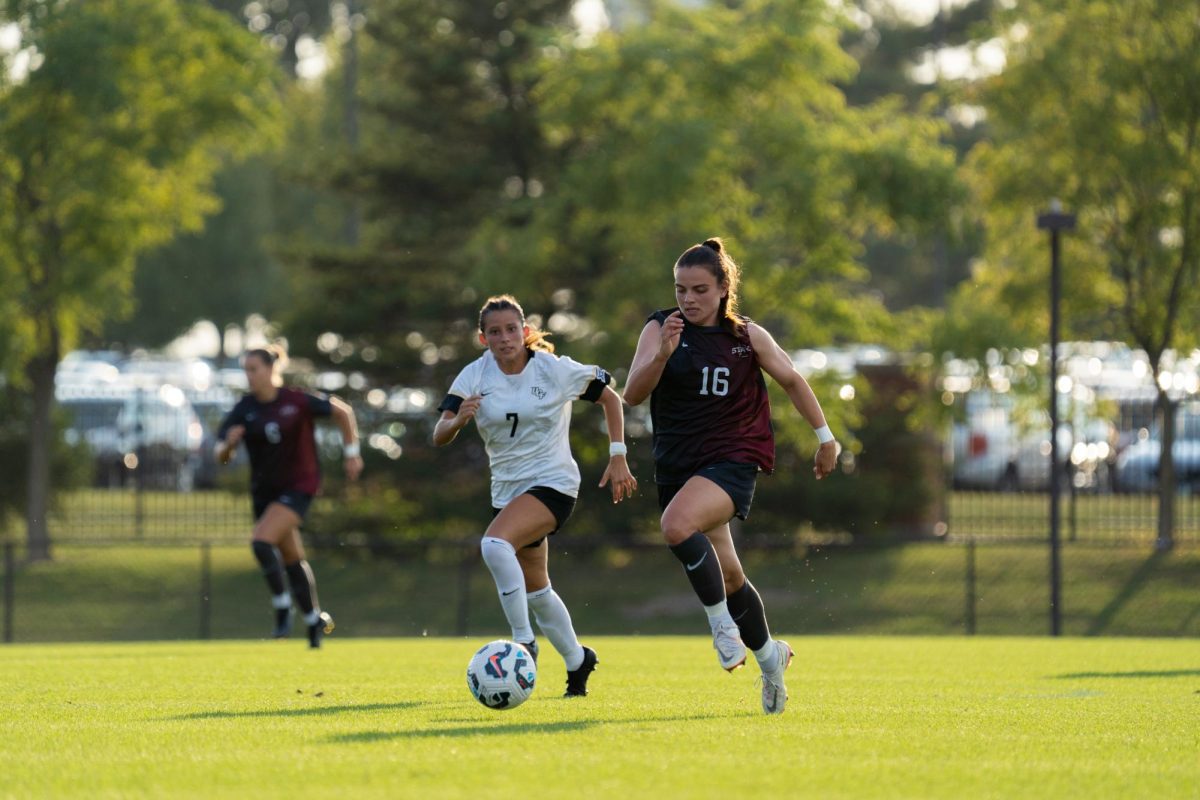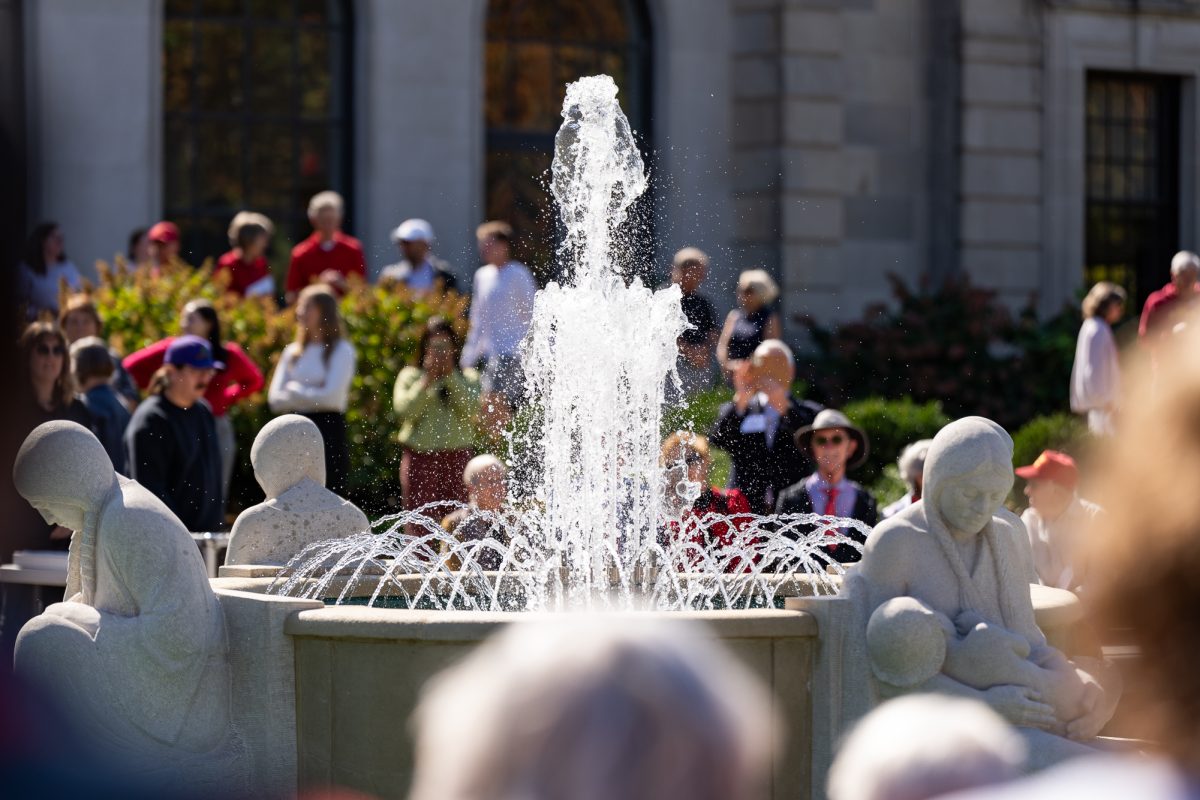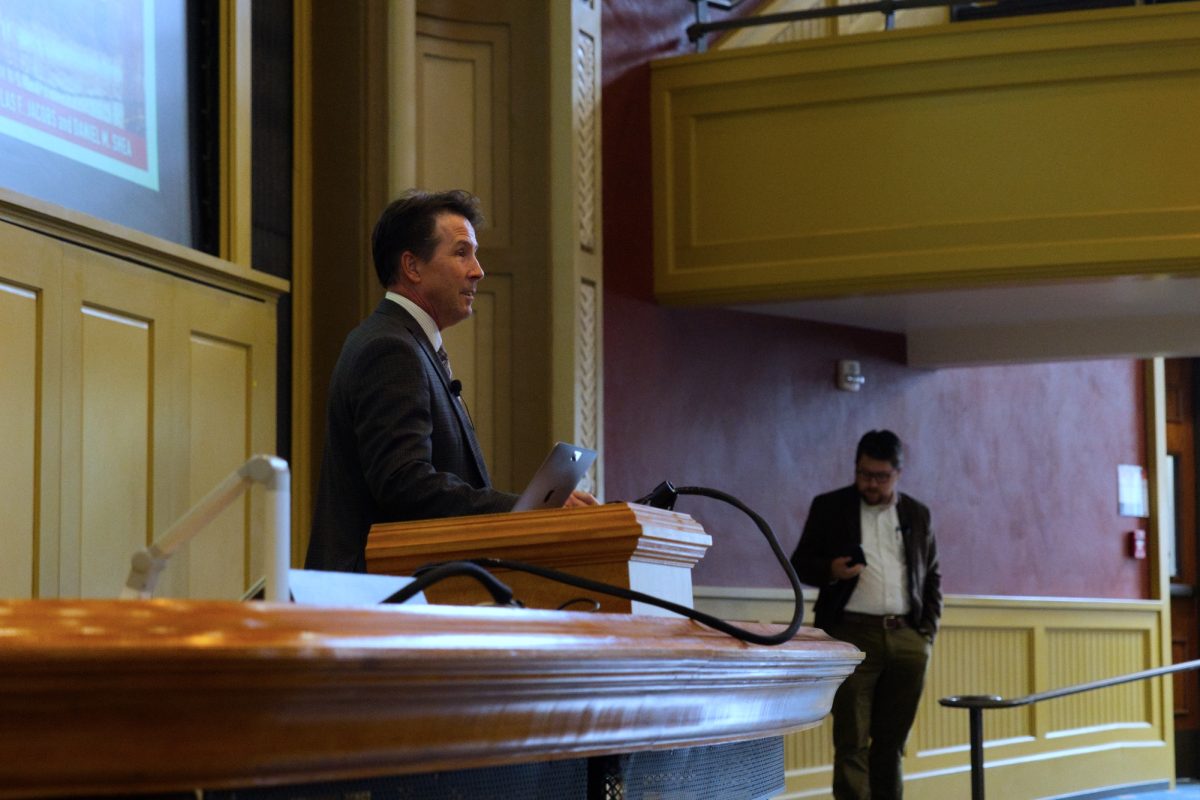Five retired greyhounds make up ‘mini blood bank’ at Small Animal Clinic
September 17, 1999
Ask Buck to roll up his sleeves to give blood, and you get fast results.
Buck is a brindle-colored greyhound and has been an instrumental member of the Iowa State Small Animal Veterinary Clinic’s blood donor program for more than two years now. The clinic is housed in College Veterinary Medicine.
There are five resident greyhounds in all — Buck, Snapper, Melba, Anne and Ellie. “We have a little, mini blood bank,” said Amy Hodnefield, the veterinary technician who oversees their care.
The donor program provides the blood needed to serve the canine patient population of the Small Animal Clinic.
Resident and non-resident dogs give blood on a rotating basis to ensure there is always enough blood for standard and emergency transfusion needs.
“The resident dogs are usually retired racing stock, acquired through their owners who don’t want to destroy their excess,” said Claudia Baldwin, faculty director of the program since 1991.
The “outhouse” dogs, a term coined by Baldwin to identify the non-resident donors, are pets of past or present veterinary students. The dogs make visits to the clinic once a month to give blood.
The outhouse dogs provide the stored portion of the blood for the bank.
As a perk, the dogs are provided with monthly checkups, preventative medicine and free food for the duration of their participation in the program.
Although blood can be stored for up to 30 days and is fine in a non-emergency situation, its capacity to carry oxygen is reduced.
“Fresh blood is most effective and is desired in an emergency,” Baldwin said.
That’s when Buck and his buddies are called to action.
Because of the benefits of fresh blood in an emergency situation, Baldwin wants to keep as many in-house dogs as needed to address the immediate transfusion needs of the hospital population.
In selecting dogs for the clinic, young-adult dogs weighing 55 pounds or more are preferred.
“At this weight,” Baldwin said, “a dog can donate 20 percent of its volume every three weeks for up to two years without any adverse effects.”
In order to qualify for the program, each dog must have a clean bill of health. “We spend about $200 screening for infectious diseases,” Baldwin said.
The greyhounds are housed in the clinic with the animal patients.
“It boosters their immune system being exposed to infectious diseases,” Baldwin said.
Also, being around the other animals and so many people helps the greyhounds to become well socialized.
Hodnefield said the dogs are crucial to the program.
“We save a lot of lives. They are here for a reason; they have a job to take care of all the other animals,” she said.
Operating an on-site blood bank not only provides an immediate source of fresh blood for the patients but reduces the actual cost of the blood transfusion, too.
The cost depends on the volume, but on average “a unit of blood would run about $120 when transferred to a patient,” Baldwin said.
From her files, she quoted one commercial source at more than $220 for the same product.
The animal care of the resident dogs is provided by Lab Animal Resources, a required unit of the university that oversees all animal use. In turn, Baldwin said, “We are billed for their care.”
“The clinic charges to the client barely cover the costs of that care,” she said.
Care of the outhouse dogs is subsidized by Veterinary Clinical Sciences.
When the greyhounds have served as donors for two years, the process of placing them into a permanent home begins.
The adoption process is just as time-consuming as the initial screening process.
“If they don’t get adopted right away, we keep them until they do,” Hodnefield said.
Counseling for potential adopters is mandatory.
“Greyhounds are sight-hounds and can exhibit peculiar behaviors,” Baldwin said. “They can behave aggressively towards a kennel mate or other animals, so we are careful to be sure owners understand the potential.”
However, Hodnefield said adoptions have been very successful in the past.
“So far, so good,” she said. “Even homes that have had cats and rabbits have worked out.
“The adopters just need to watch carefully at first to see what their personalities are, and then work with them,” she said.






